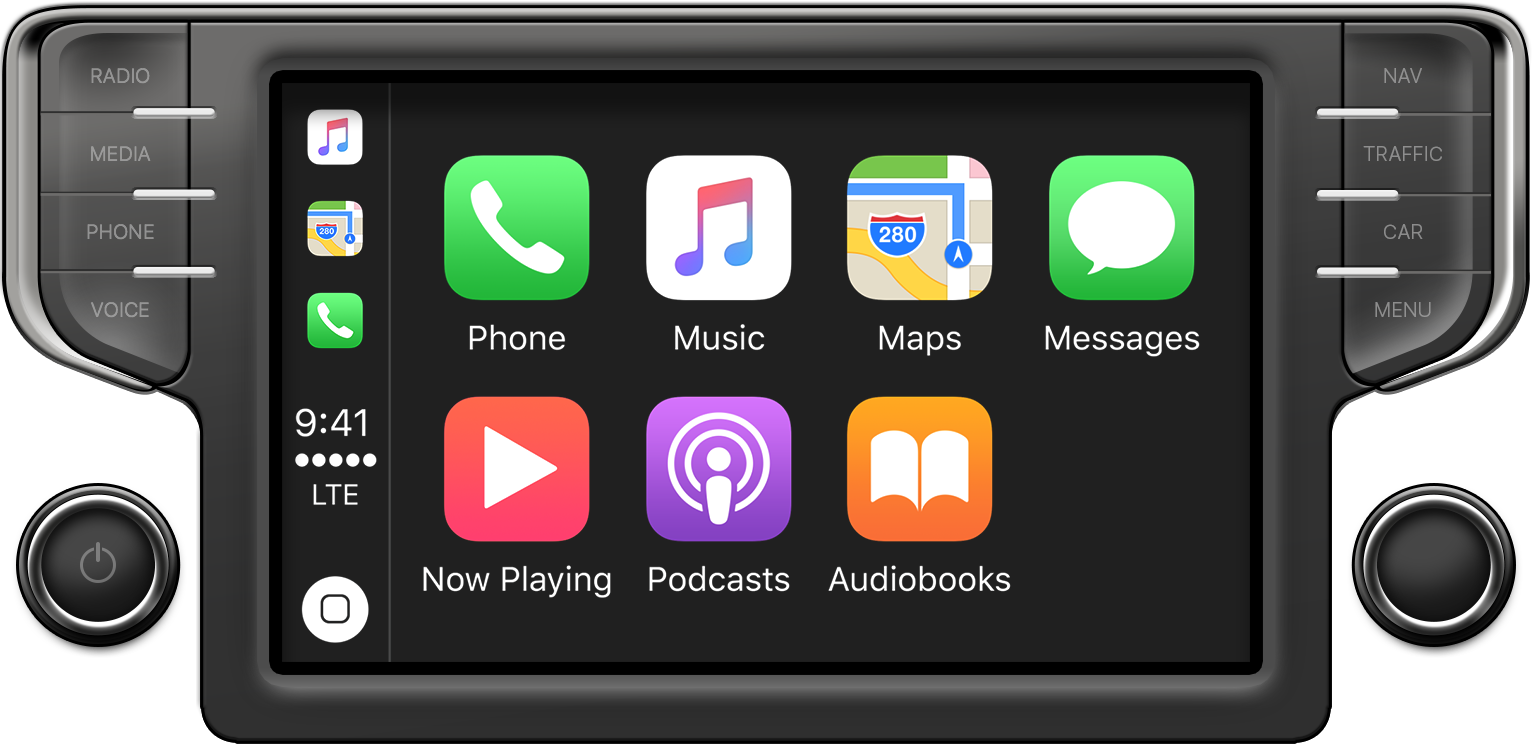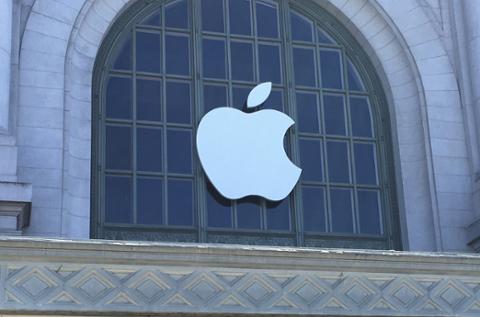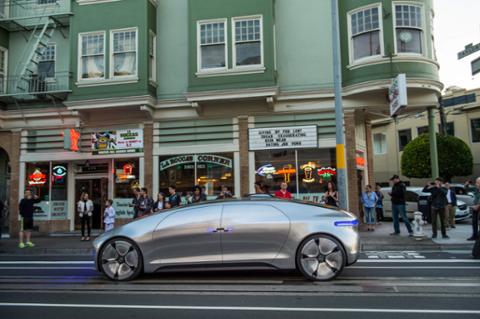[caption id="attachment_141181" align="aligncenter" width="1532"]

Apple has CarPlay as its in-car software solution.[/caption] The Apple Car (that is, an
actual car carrying Apple’s branding) was a concept the company considered at one point. But it’s not happening, and a new report tells us why:
infighting. The
New York Times spoke with five sources familiar with Apple’s plans, dubbed Project Titan. It seems rumors of a fully
autonomous car in development were true; Apple is testing that technology on employees right now. A self-driving shuttle service named PAIL (Palo Alto Infinite Loop) will carry workers from building to building across Apple’s various campuses throughout Silicon Valley. Testing will technically take place on public roads, but not in the same way as Google’s Waymo (another prominent self-driving project). Apple is said to have a commercial vehicle retrofit for PAIL, which could be the Lexus SUV previously rumored to factor into Apple's autonomous-driving plans. Apple also considered manufacturing an actual car, but it seems that idea has
been scrapped. Apple's chief designer, Jony Ive, “believed that a fully driverless car would allow the company to reimagine the automobile experience,” sources told the
Times. The "fully driverless" faction even wanted the Apple Car to have spherical wheels, theoretically giving the vehicle better lateral movement. As imagined, the interior would have lacked pedals or even a steering wheel, and the doors would have small motors to open and close silently. In-car screens would have leveraged virtual- or augmented-reality features. Apple also tried redesigning the LIDAR system, i.e., the bulky gear on top of existing self-driving cars. Although Apple's engineers reportedly tried to make this hardware slimmer and more integrated into the car's design, it seems that Waymo
may have beat them to the punch there, too. [caption id="attachment_139520" align="aligncenter" width="2989"]

Apple Platforms[/caption]
Software was also hotly debated among Apple's engineers and executives. An operating system called carOS (The
Times calls it ‘CarOS,’ but that doesn’t fit Apple’s scheme) was supposedly the focus of the project, but engineers couldn’t agree on whether it should be built with Swift or C++. Swift still doesn’t have ABI stability, and C languages are far more common for autonomous vehicle technology. If the
Times story is taken at face value, Apple’s own internal struggles have led it to delay or abandon its autonomous car efforts. Executives in charge of Project Titan didn’t know what they wanted to build, and couldn’t decide on a path forward. Apple may also be bleeding talent, given how
so many other companies are hard at work on the same dream of self-driving cars. Daring Fireball’s John Gruber
posits that Apple’s internal work on Project Titan may have yielded results elsewhere.
ARKit, which uses a method of scanning flat surfaces in order to overlay 3D graphics, “seems like exactly the sort of thing that might have first been focused on identifying, say, roads.” It’s not far-fetched, but then again, a team with severe infighting would likely not readily give up tech to another division just so users could get
nicer walking directions to Starbucks. An ‘Apple Car’ sounds great in theory, but a pedal-free, round-wheeled design might have proven far
too ambitious for today's drivers. Apple’s apparent new path of weaving an in-car operating system into existing production models is far more sustainable and aligned with the company’s core values. It also means we’ll likely get something to spur the developer community for automobile software, which is exciting (even if it might be sadly limiting compared to what might have been, technology-wise).
 Apple has CarPlay as its in-car software solution.[/caption] The Apple Car (that is, an actual car carrying Apple’s branding) was a concept the company considered at one point. But it’s not happening, and a new report tells us why: infighting. The New York Times spoke with five sources familiar with Apple’s plans, dubbed Project Titan. It seems rumors of a fully autonomous car in development were true; Apple is testing that technology on employees right now. A self-driving shuttle service named PAIL (Palo Alto Infinite Loop) will carry workers from building to building across Apple’s various campuses throughout Silicon Valley. Testing will technically take place on public roads, but not in the same way as Google’s Waymo (another prominent self-driving project). Apple is said to have a commercial vehicle retrofit for PAIL, which could be the Lexus SUV previously rumored to factor into Apple's autonomous-driving plans. Apple also considered manufacturing an actual car, but it seems that idea has been scrapped. Apple's chief designer, Jony Ive, “believed that a fully driverless car would allow the company to reimagine the automobile experience,” sources told the Times. The "fully driverless" faction even wanted the Apple Car to have spherical wheels, theoretically giving the vehicle better lateral movement. As imagined, the interior would have lacked pedals or even a steering wheel, and the doors would have small motors to open and close silently. In-car screens would have leveraged virtual- or augmented-reality features. Apple also tried redesigning the LIDAR system, i.e., the bulky gear on top of existing self-driving cars. Although Apple's engineers reportedly tried to make this hardware slimmer and more integrated into the car's design, it seems that Waymo may have beat them to the punch there, too. [caption id="attachment_139520" align="aligncenter" width="2989"]
Apple has CarPlay as its in-car software solution.[/caption] The Apple Car (that is, an actual car carrying Apple’s branding) was a concept the company considered at one point. But it’s not happening, and a new report tells us why: infighting. The New York Times spoke with five sources familiar with Apple’s plans, dubbed Project Titan. It seems rumors of a fully autonomous car in development were true; Apple is testing that technology on employees right now. A self-driving shuttle service named PAIL (Palo Alto Infinite Loop) will carry workers from building to building across Apple’s various campuses throughout Silicon Valley. Testing will technically take place on public roads, but not in the same way as Google’s Waymo (another prominent self-driving project). Apple is said to have a commercial vehicle retrofit for PAIL, which could be the Lexus SUV previously rumored to factor into Apple's autonomous-driving plans. Apple also considered manufacturing an actual car, but it seems that idea has been scrapped. Apple's chief designer, Jony Ive, “believed that a fully driverless car would allow the company to reimagine the automobile experience,” sources told the Times. The "fully driverless" faction even wanted the Apple Car to have spherical wheels, theoretically giving the vehicle better lateral movement. As imagined, the interior would have lacked pedals or even a steering wheel, and the doors would have small motors to open and close silently. In-car screens would have leveraged virtual- or augmented-reality features. Apple also tried redesigning the LIDAR system, i.e., the bulky gear on top of existing self-driving cars. Although Apple's engineers reportedly tried to make this hardware slimmer and more integrated into the car's design, it seems that Waymo may have beat them to the punch there, too. [caption id="attachment_139520" align="aligncenter" width="2989"]  Apple Platforms[/caption] Software was also hotly debated among Apple's engineers and executives. An operating system called carOS (The Times calls it ‘CarOS,’ but that doesn’t fit Apple’s scheme) was supposedly the focus of the project, but engineers couldn’t agree on whether it should be built with Swift or C++. Swift still doesn’t have ABI stability, and C languages are far more common for autonomous vehicle technology. If the Times story is taken at face value, Apple’s own internal struggles have led it to delay or abandon its autonomous car efforts. Executives in charge of Project Titan didn’t know what they wanted to build, and couldn’t decide on a path forward. Apple may also be bleeding talent, given how so many other companies are hard at work on the same dream of self-driving cars. Daring Fireball’s John Gruber posits that Apple’s internal work on Project Titan may have yielded results elsewhere. ARKit, which uses a method of scanning flat surfaces in order to overlay 3D graphics, “seems like exactly the sort of thing that might have first been focused on identifying, say, roads.” It’s not far-fetched, but then again, a team with severe infighting would likely not readily give up tech to another division just so users could get nicer walking directions to Starbucks. An ‘Apple Car’ sounds great in theory, but a pedal-free, round-wheeled design might have proven far too ambitious for today's drivers. Apple’s apparent new path of weaving an in-car operating system into existing production models is far more sustainable and aligned with the company’s core values. It also means we’ll likely get something to spur the developer community for automobile software, which is exciting (even if it might be sadly limiting compared to what might have been, technology-wise).
Apple Platforms[/caption] Software was also hotly debated among Apple's engineers and executives. An operating system called carOS (The Times calls it ‘CarOS,’ but that doesn’t fit Apple’s scheme) was supposedly the focus of the project, but engineers couldn’t agree on whether it should be built with Swift or C++. Swift still doesn’t have ABI stability, and C languages are far more common for autonomous vehicle technology. If the Times story is taken at face value, Apple’s own internal struggles have led it to delay or abandon its autonomous car efforts. Executives in charge of Project Titan didn’t know what they wanted to build, and couldn’t decide on a path forward. Apple may also be bleeding talent, given how so many other companies are hard at work on the same dream of self-driving cars. Daring Fireball’s John Gruber posits that Apple’s internal work on Project Titan may have yielded results elsewhere. ARKit, which uses a method of scanning flat surfaces in order to overlay 3D graphics, “seems like exactly the sort of thing that might have first been focused on identifying, say, roads.” It’s not far-fetched, but then again, a team with severe infighting would likely not readily give up tech to another division just so users could get nicer walking directions to Starbucks. An ‘Apple Car’ sounds great in theory, but a pedal-free, round-wheeled design might have proven far too ambitious for today's drivers. Apple’s apparent new path of weaving an in-car operating system into existing production models is far more sustainable and aligned with the company’s core values. It also means we’ll likely get something to spur the developer community for automobile software, which is exciting (even if it might be sadly limiting compared to what might have been, technology-wise). 


